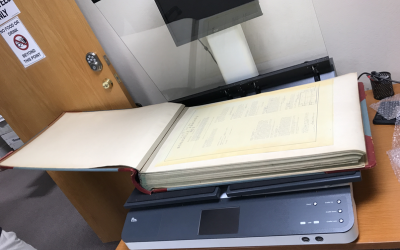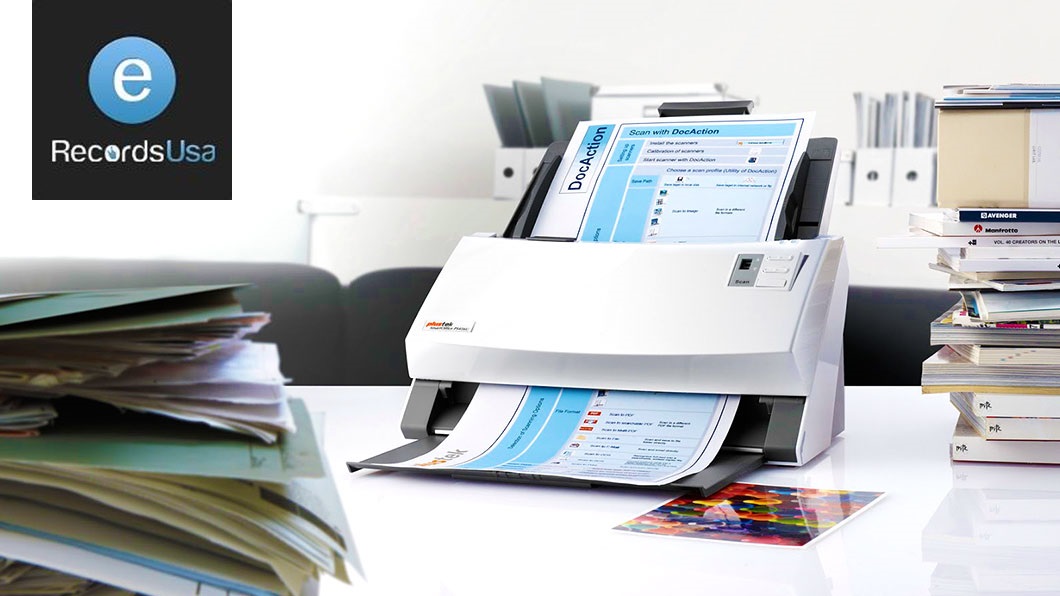Scanning Large Format Documents
What is the best file type for large format printing? And what capabilities does large format printing offer that can transform your digitize large format documents? Large format documents, encompassing everything from architectural plans and engineering drawings to marketing posters and banners, are indispensable tools in conveying complex information and captivating visuals on a grand scale. These documents require specific file formats to ensure clarity, precision, and quality in the final output.
Document In the vast digital expanse where information proliferates at an unprecedented pace, large format scanning stands as a pivotal technology, transforming how we interact with documents of significant scale. At the heart of this discussion lies the expansive array of materials that this method brings into the digital fold, ensuring their preservation, accessibility, and continued relevance in a rapidly advancing technological age.
A New Frontier in Document Digitalization
As we step into the realm of large format scanning, we encounter a technology that transcends the traditional boundaries of document preservation. This method is not merely about converting physical documents into digital files; it’s about creating a bridge between the tangible and the virtual, a conduit through which the vast knowledge and creativity encapsulated in larger documents can be accessed, shared, and preserved for future generations.
Among the most prominent beneficiaries of this technology are the meticulously crafted blueprints and technical drawings that serve as the foundation for architectural marvels and engineering feats around the globe. These documents, often sprawling over large canvases, contain the intricate details and specifications that guide the construction and development of structures and machines. Bringing these documents into the digital domain allows for a level of interaction and collaboration that was previously unimaginable, enabling professionals to work together seamlessly, regardless of their physical location.
The Essence of Large Format Scanning
At its core, large format scanning is a specialized procedure designed to digitize documents that exceed the size limitations of conventional scanning devices. These are not your average documents; they are the titans of the paper world—ranging from architectural blueprints that map out the skeletons of future cities, to historical maps charting lands untraveled, and artworks that capture the essence of human emotion on a grand scale. This technology takes these behemoths under its wing, gently coaxing them into the digital domain where they can soar without the constraints of physical degradation
Types of Documents Suitable for Large Format Scanning
1. Architectural Drawings and Blueprints
These documents are the foundation upon which buildings and infrastructure are conceptualized, designed, and constructed. They contain detailed specifications, measurements, and designs essential for accurate development and realization of architectural projects.
Difficulties with Physical Documents – Due to their substantial size, these drawings and blueprints present significant challenges in terms of physical handling, storage, and preservation. The risk of wear, tear, and loss increases with the physical handling required for consultation and collaboration among project stakeholders.
2. Engineering and Technical Drawings
These intricate drawings are pivotal in sectors such as engineering, manufacturing, and product development. They serve as precise guides for creating machinery, components, and systems, detailing every specification required for accurate fabrication and assembly.
Digital Transformation Boosts Teamwork and Productivity – Transitioning these documents from paper to digital formats facilitates a leap in how teams work together. Sharing, annotating, and revising becomes streamlined, significantly speeding up the design process. Digital files can be accessed simultaneously by team members in different locations, fostering a dynamic and interactive approach to project development and problem-solving.
3. Maps and Aerial Photographs
These visual documents are indispensable tools in fields such as geography, urban development, and environmental research. They offer comprehensive views of landscapes, urban layouts, and natural resources, aiding in planning, analysis, and decision-making processes.
Digital Enhancements in Geographical Information Systems (GIS) and Remote Sensing – When converted to digital formats, these geographical and topographical representations gain added utility within GIS and remote sensing technologies. This transition allows for the integration of maps and photographs with various data layers, enabling complex analyses that support better understanding of geographical phenomena, land use planning, and resource management. Digital formats also facilitate easier updates and modifications, ensuring that the data remains current and relevant.
4. Artwork and Historical Documents
Artworks and historical records are key to understanding cultural heritage and history. Scanning these items not only helps in their preservation by minimizing physical handling but also facilitates the creation of digital archives. Such archives make it possible for future generations to study and appreciate these works without exposing them to the risks of deterioration.
Navigating the Delicacies of Age and Fragility – The process of digitizing artworks and documents that have withstood the test of time presents its own set of challenges. Their delicate nature requires specialized scanning equipment and handling techniques to avoid damage. The intricacies of their textures, colors, and materials demand high-resolution scanning to capture the full depth and detail without physical contact or harm.
5. Posters and Advertising Materials
These vibrant and visually compelling materials are essential in capturing the audience’s attention in various marketing endeavors. Digitizing these documents not only ensures their longevity beyond the physical wear and tear but also simplifies the processes of archiving and retrieving for future use. Additionally, digital replicas maintain the original’s quality, allowing for limitless reproductions without degradation.
Illustrative Examples of Digital Marketing Successes – Several case studies highlight how digital versions of marketing materials have propelled campaigns to new heights. For instance, scanned images used in digital platforms offer wider reach and engagement, demonstrating the power of blending traditional advertising aesthetics with modern digital distribution channels. These case studies serve as testament to the effectiveness of digital archives in enhancing the visibility and impact of marketing campaigns across diverse sectors.
Benefits of scanning documents in large formats
By embracing the advantages of large format scanning, organizations and individuals not only protect and preserve important documents but also unlock new potentials for their use, sharing, and evolution, aligning with the digital transformation of our society.
- Ensures Long-Term Safeguarding – Large format scanning transforms fragile, perishable paper documents into durable digital formats, reducing the risk of physical damage from handling, environmental factors, or time itself. This process acts as a guardian, ensuring the longevity of valuable information and artistic expressions.
- Expands Reach and Use – Digital documents can be accessed from virtually anywhere, breaking down geographical barriers. This universal access allows for greater collaboration among professionals across different locations, enabling a seamless exchange of ideas and information.
- Optimizes Storage Efficiency – Converting voluminous physical documents into digital files significantly reduces the need for physical storage space. This not only frees up valuable real estate but also simplifies the organization and retrieval of documents, making the management of large collections more efficient.
- Enhances Information Retrieval – Digitized documents can be easily indexed, searched, and retrieved with the help of modern database technologies. This reduces the time and effort required to find specific information, making research and reference tasks significantly more efficient.
- Facilitates Superior Reproduction Quality – Digital files can be duplicated without any degradation in quality, ensuring that every copy is as clear and detailed as the original. This is particularly important for documents where precision and clarity are paramount, such as technical drawings or detailed maps.
- Supports Environmental Sustainability – By minimizing the need for physical copies, large format scanning contributes to reducing paper consumption and waste, aligning with environmentally sustainable practices and helping to conserve natural resources.
- Encourages Adaptability and Innovation – Once in digital form, documents can be easily modified, updated, or repurposed, fostering creativity and innovation. This adaptability is crucial in fields where information is constantly evolving or needs to be customized for specific applications.
Why Professional Large Format Scanning Services Might Be a Better Option For You?
Opting for professional scanning services can often present a more effective solution for digitizing large format documents, especially when precision, quality, and efficiency are paramount. Here’s why entrusting this task to experts like eRecordsUSA might be the wisest choice:
Access to Advanced Technology: Professional services are equipped with state-of-the-art scanners capable of handling a wide range of document sizes and types, ensuring high-quality scans with accurate color reproduction and detail.
Expert Handling of Documents: Professionals have the expertise to handle delicate and aged documents, ensuring they are scanned without damage. This is particularly important for historical documents, artworks, and other sensitive materials.
Time and Resource Efficiency: Outsourcing the scanning process saves valuable time and resources that can be better utilized elsewhere. Professional scanning services can handle large volumes of documents quickly and efficiently, delivering high-quality digital files in a fraction of the time it would take to do in-house.
Customized Solutions: Professional services offer tailored solutions to meet specific needs, including various file formats, resolutions, and digital archiving options, ensuring the final product is exactly what the client requires.
Enhanced Security and Confidentiality: Reputable scanning services provide secure handling and confidentiality of sensitive documents, giving clients peace of mind that their information is protected throughout the scanning process.
Are you looking to preserve, share, or efficiently manage your large format documents? Look no further! eRecordsUSA offers top-tier large format scanning services, leveraging cutting-edge technology and a team of experts dedicated to ensuring your documents are digitized to perfection. Whether it’s architectural blueprints scanning, engineering drawings scanning, maps scanning, kids artworks scanning, or historical documents preservation, our customized document scanning solutions cater to all your document scanning needs. Contact eRecordsUSA today to discover how we can help you transition seamlessly into the digital age, ensuring your documents are preserved, accessible, and ready for the future.
Let us help you with historical and museum collections and share them with the world.
eRecordsUSA is also specialized in providing Document Scanning services, Would you like to receive a free quote for your large format documents? Call 510.900.8800 or eMail us at [email protected].














